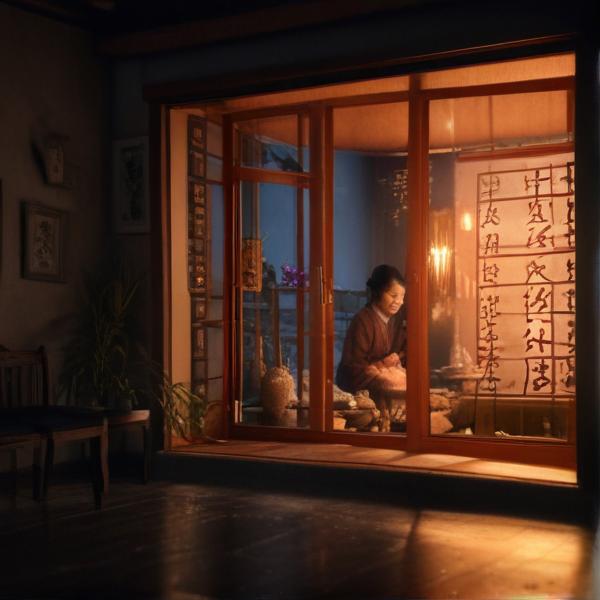基本信息 (Basic Information)
含义与用法 (Meanings & Usage)
中文核心释义 (Core Chinese Meaning): 装饰、化妆,主要指用化妆品、首饰等修饰容貌,多用于女性。
英文核心释义 (Core English Meaning): to make up, adorn, makeup (especially referring to cosmetics and adornment, mainly for women).
象形意义 / 为何这么写 (Pictographic Meaning / Writing Rationale)
文言文释义 (Classical Chinese Meaning)
与现代意义相近,主要指化妆、梳妆打扮。Similar to modern meaning; mainly refers to makeup, grooming, and adornment.
深入学习 (In-depth Study)
字源故事 (Origin Story)
字形演变 (Character Evolution)
常用词语和例句 (Common Words & Examples)
化妆 (to put on makeup)
她每天早上都会花时间化妆。
Eng: She spends time putting on makeup every morning.
新娘妆 (bridal makeup)
化妆师为她设计了精致的新娘妆。
Eng: The makeup artist designed an exquisite bridal makeup for her.
妆容 (makeup look)
她的妆容很自然,看起来非常漂亮。
Eng: Her makeup look is very natural and she looks beautiful.
相关成语 (Related Idioms)
相关成语信息待补充。Related idiom information pending.
多语言翻译 (核心释义) (Translations (Core Meaning))
- French: maquillage, se maquiller
- German: Make-up, schminken
- Spanish: maquillaje, maquillarse
- Italian: trucco, truccarsi
- Portuguese: maquiagem, maquiar
- Russian: макияж, краситься
- Arabic: مكياج
- Persian: آرایش، آرایش کردن
- Dutch: make-up, zich opmaken
- Polish: makijaż, malować się
- Vietnamese: trang điểm
- Ukrainian: макіяж, робити макіяж
视频学习资源 (Video Learning Resources)
通过以下链接在热门视频网站搜索 "妆" 的更多讲解:
Search for more explanations of "妆" on popular video sites:
- 在 Bilibili.com 搜索 "妆 字源 说文解字" (Search on Bilibili)
- 在 YouTube.com 搜索 "妆 character origin etymology" (Search on YouTube)
网络参考 (Web References for "妆") ()
网络内容摘要 (Web Content Summary):
妆 的核心含义是“修饰、打扮”,常用来指化妆或装饰外表。 The core meaning of 妆 is "to adorn or dress up," commonly referring to putting on makeup or decorative grooming.
- 字形起源: “妆”最早见于甲骨文和金文。甲骨文中一部分像“女”(女人),另一部分像床(牀),表达“女人在床上打扮”的形象。金文的结构也包含“女人”和“床”的元素。 Pictographic origin: In oracle bone script, "妆" is composed of a part signifying "woman" (女) and another resembling a bed, indicating "a woman dressing up on a bed." This imagery is retained in later bronze script forms.
- 有趣的文化背景: 妆与中国古代女性梳妆打扮密切相关,体现了审美与仪式感。 Cultural background: "妆" is closely associated with traditional Chinese women's grooming and reflects cultural aesthetics and rituals.
- 常用词语: 常见词语如“化妆”(to put on makeup)、“梳妆”(to do one's hair and makeup)、“新娘妆”(bridal makeup)。 Common words: Frequently used terms include “化妆” (to put on makeup), “梳妆” (to do one's hair and makeup), and “新娘妆” (bridal makeup).
- 易混淆点: “妆”容易与“装”(装饰、装备)混淆,注意“妆”侧重于外貌修饰,通常与女性相关。 Easily confused: "妆" can be confused with "装" (to dress or decorate), but "妆" specifically refers to appearance and is often related to women.
成语: 如“浓妆淡抹”(heavy or light makeup),形容不同的装饰风格。 Idiom: For example, “浓妆淡抹” (strong or light makeup), describes varying styles of adornment.
妆字形演变字源_汉字「妆」_妆的甲骨文_妆的金文_金文编_甲骨文编
妆字形演变字源,汉字「妆」,妆的甲骨文,妆的金文,金文编,甲骨文编 明清实录 | 二十四史 | 四库全书 | 古今图书集成 | 历史人物 | 说文解字 | 成语词典 | 甲骨文合集 | 殷周金文集成 | 象形字典 | 十三经索引 | 字体转换器 | 篆书识别 | 近义反义词 | 对联大全 | 家谱 ...
汉字"妆"的起源、演变过程-汉字字源辞典
"妆" 是修饰打扮。《说文》: "妆,饰也。从女,牀省声。" 甲骨文写作 " 、 " , 其中 " "是女人的形状, " "(读pán)是用锯开的木板做的牀, 横看 " " 更象牀形, 会意女人在床上打扮。 金文(古玺文)写作 " 、 " , 虽不如甲骨文直观, 也可看出主要字素仍是女人和牀形,其中 ...
更多图片 (妆 More Images) ()
